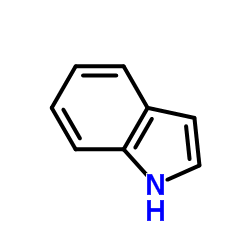138489-18-6
| Name | Bisindolylmaleimide IX mesylate |
|---|---|
| Synonyms |
Ro 31-8220
3-Methyl-3-tert-pentylamino-1-butyne Carbamimidothioic acid, 3-[3-[2,5-dihydro-4-(1-methyl-1H-indol-3-yl)-2,5-dioxo-1H-pyrrol-3-yl]-1H-indol-1-yl]propyl ester Bisindolylmaleimide IX Mesylate 3-{3-[4-(1-Methyl-1H-indol-3-yl)-2,5-dioxo-2,5-dihydro-1H-pyrrol-3-yl]-1H-indol-1-yl}propyl carbamimidothioate 3-t-Amylamino-3-methylbutin 3-tert-Amylamino-3-methyl-but-1-in Ro-318220 N-tert-Amyl-1,1-dimethylpropargylamine 3-<1.1-Dimethyl-propylamino>-3-methyl-1-butin Tert.-amyl-3.3-dimethylpropyne-1-ylamin 3-tert.-Amylamino-3-methyl-1-butin Ro 31-8220 mesylate Ro 31-8220 (mesylate) |
| Description | Ro 31-8220 mesylate is a potent PKC inhibitor, with IC50s of 5, 24, 14, 27, 24 and 23 nM for PKCα, PKCβI, PKCβII, PKCγ, PKCε and rat brain PKC, respectively. Ro 31-8220 also significantly inhibits MAPKAP-K1b, MSK1, S6K1 and GSK3β |
|---|---|
| Related Catalog | |
| Target |
PKC-α:5 nM (IC50) PKC-βI:24 nM (IC50) PKC-βII:14 nM (IC50) PKC-γ:27 nM (IC50) PKC-ε:24 nM (IC50) Rat Brain PKC:23 nM (IC50) MAPKAP-K1b:3 nM (IC50) MSK1:8 nM (IC50) S6K1:15 nM (IC50) GSK3β:38 nM (IC50) |
| In Vitro | Ro 31-8220 mesylate is a potent PKC inhibitor, with IC50s of 5, 24, 14, 27, 24 and 23 nM for PKCα, PKCβI, PKCβII, PKCγ, PKCε and rat brain PKC, respectively[1]. Ro 31-8220 also significantly inhibits MAPKAP-K1b, MSK1, S6K1 and GSK3β (IC50s, 3, 8, 15, and 38 nM, respectively), with no effect on MKK3, MKK4, MKK6 and MKK7. Moreover, Ro 31-8220 directly suppresses voltage-dependent Na+ channels[2]. Ro 31-8220 (1 μM) is neuroprotective against paraoxon-induced neuronal cell death in cerebellar granule neurons, blocks paraoxon-induced caspase-3 activity, and reduces the paraoxon-induced increase in phospho-PKC pan levels[3]. |
| In Vivo | Ro 31-8220 (6 mg/kg/d, s.c.) is well tolerated, and has half-life of 5.7 hours in mice. Ro 31-8220-treated MLP−/− mice show a dramatic rescue in fractional shortening after treatment for 6 weeks, but the WT mice shows no change[4]. |
| Cell Assay | A neurotoxic concentration of paraoxon (200 μM) is added to the granule cell cultures for the indicated time on day in vitro (DIV) 8. The following drugs are added to the granule cell cultures prior to or after paraoxon exposure on DIV 8: Ro-81-3220 (1 μM) is added 15 min prior to or 3 h after the addition of paraoxon. TPA (0.1 μM) is added 15 min prior to the addition of paraoxon[1]. |
| Animal Admin | Mice[4] The affects of long-term Ro 31-8220 administration over 4 to 6 weeks in MLP−/− heart failure mice are investigated. All mice are assessed for ventricular performance by echocardiography at the beginning of the study and 6 weeks later. Ro 31-8220 (or vehicle) is injected subcutaneously once per day at a dosage of 6 mg/kg/d[4]. |
| References |
| Density | 1.4±0.1 g/cm3 |
|---|---|
| Molecular Formula | C26H27N5O5S2 |
| Molecular Weight | 553.65 |
| PSA | 131.20000 |
| LogP | 3.95 |
| Index of Refraction | 1.740 |
| Storage condition | 0-6°C |
|
~% 
138489-18-6 |
| Literature: US5057614 A1, ; |
|
~77% 
138489-18-6 |
| Literature: Davis, Peter D.; Elliot, Lucy H.; Harris, William; Hill, Christopher H.; Hurst, Steven A.; et al. Journal of Medicinal Chemistry, 1992 , vol. 35, # 6 p. 994 - 1001 |
|
~% 
138489-18-6 |
| Literature: Journal of Medicinal Chemistry, , vol. 35, # 6 p. 994 - 1001 |
|
~% 
138489-18-6 |
| Literature: Journal of Medicinal Chemistry, , vol. 35, # 6 p. 994 - 1001 |
|
~% 
138489-18-6 |
| Literature: Journal of Medicinal Chemistry, , vol. 35, # 6 p. 994 - 1001 |
|
~% 
138489-18-6 |
| Literature: Journal of Medicinal Chemistry, , vol. 35, # 6 p. 994 - 1001 |
| Precursor 2 | |
|---|---|
| DownStream 0 | |




